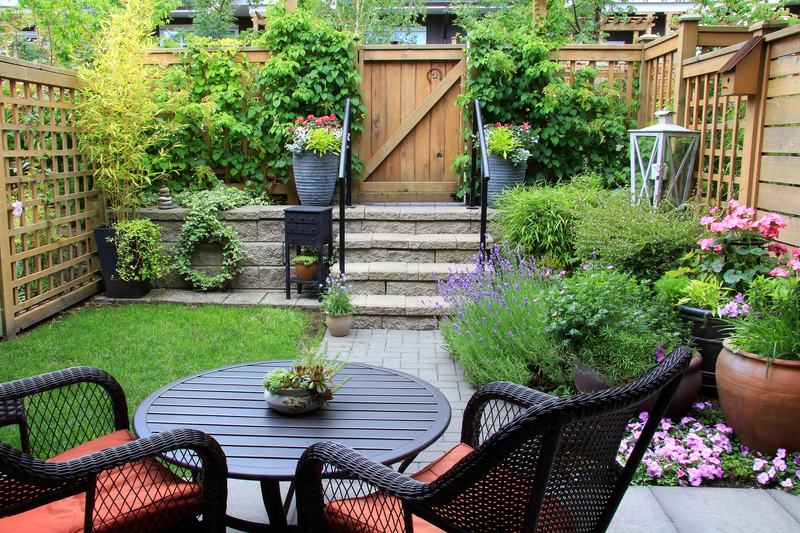Simple Secrets to Transform Your Lawn into a Verdant Retreat
There's something special about stepping out into your own personal oasis: a lush, green, and thriving lawn. Not only does a vibrant yard add curb appeal, but it also creates a restorative space right outside your door, inviting you to relax, play, and entertain. However, achieving a truly verdant retreat is more than just routine mowing. It's about understanding your landscape's needs and nurturing your lawn with simple yet effective strategies. Discover the best lawn care secrets in this comprehensive guide, and transform your outdoor space into a beautiful, serene haven.

Understanding Your Lawn: The Foundation of a Verdant Retreat
Before you embark on your journey to an emerald-green lawn, it's crucial to gain an understanding of the unique characteristics of your yard. Assessing factors like soil type, grass species, sunlight exposure, and climate can help you make targeted improvements.
- Soil Type: Test the soil to gauge pH levels and nutrient content. Healthy soil is the bedrock of a luscious lawn.
- Grass Type: Identify whether you have cool-season or warm-season grass. Common examples include Kentucky bluegrass, fescue, Bermuda, and zoysia.
- Sunlight Patterns: Track the amount of sunlight different zones receive--some grasses thrive in shade, while others demand full sun.
- Climate and Weather: Local climate influences watering schedules, grass growth cycles, and the types of seed or sod that will flourish.
*Pro Tip:
Working with, instead of against, the natural conditions of your lawn will always yield the best, most sustainable results.
Secret #1: Aerate for Healthier, Deeper Roots
Aeration is often overlooked but is one of the simplest secrets to achieving a lush, green retreat. Over time, soil becomes compacted from foot traffic, lawn equipment, and rainfall, making it difficult for water and nutrients to reach the roots where they're needed. Lawn aeration involves perforating the soil with small holes, enabling air, water, and fertilizers to penetrate deep into the grassroots zone.
- When to Aerate: Early spring or fall for cool-season grasses, late spring for warm-season varieties.
- How to Aerate: Use a spike or plug aerator for larger lawns, or a manual aerator for small yards.
- After Aeration: Water thoroughly and consider overseeding to fill bare spots.
Secret #2: Choose the Right Grass Seed and Overseed Regularly
Even the best lawns develop thin or patchy areas, especially after heavy use or harsh weather. The key to a continuously lush, verdant garden lawn lies in overseeding with the correct grass variety for your environment.
- Warm-Season Lawns: Look for Bermuda, Bahia, or Zoysia grass for sunny, southern yards.
- Cool-Season Lawns: Fescue, Kentucky bluegrass, or ryegrass for northern, temperate climates.
- Shade Areas: Fine fescue or St. Augustine are best for limited sunlight.
Overseeding invigorates your lawn, thickening the turf and reducing weed invasion naturally. To maximize results:
- Mow grass short and remove clippings to prepare the soil.
- Spread seed evenly with a broadcast spreader.
- Keep the area moist for at least 2-3 weeks until new grass is established.
Remember: Healthy, dense grass naturally crowds out weeds, reducing your need for herbicides or constant spot-treatment.
Secret #3: Master the Art of Mowing
Mowing is more than a weekly chore--it's an essential part of maintaining a lush landscape retreat. Proper mowing encourages thicker growth, prevents weeds, and maintains the vibrant green color that marks a beautiful lawn.
- Height Matters: Never cut more than one-third of the grass height in a single session. Taller grass develops deeper roots and resists drought.
- Blade Sharpness: Dull mower blades tear grass, leading to ragged, brown tips and an open invitation to pests and diseases.
- Change Directions: Mow in a different direction each session to prevent soil compaction and uneven growth.
- Leave Clippings: Grass clippings decompose quickly and return valuable nutrients to the soil, naturally fertilizing your lawn.
Tip: For an ultra-lush retreat, adjust mowing height based on grass type and season--cool-season grasses, for example, prefer a mow height of 2.5-3.5 inches during hot months to promote shade and conserve moisture.
Secret #4: Water Wisely for a Truly Verdant Lawn
Water is life for your lawn, but how and when you water makes all the difference. Smart watering is crucial to both the health of your grass and your water bill. Avoid shallow, frequent watering that encourages weak roots and disease. Instead, implement these watering secrets for a green retreat:
- Water Early: The best time to water is early morning. This reduces evaporation and allows time for grass blades to dry, reducing the risk of fungal diseases.
- Deep, Infrequent Watering: Aim for about 1 inch of water per week, delivered in one or two sessions. This promotes deep root growth and better drought tolerance.
- Adjust for Rainfall: Use a rain gauge or smart irrigation system to avoid overwatering after rain.
- Spot-Check Regularly: Insert a screwdriver into the soil after watering. If it slides in easily, the soil is sufficiently moist.
Underlined and italic note: Automatic irrigation systems are convenient but require calibration to ensure even, efficient watering. Don't forget to check for leaks and adjust sprinkler heads as your landscape grows!
Secret #5: Feed Your Lawn for Lasting Greenery
A truly verdant retreat is well-fed--just like any living thing. Lawns draw essential nutrients from the soil to grow thick and green, but over time, these are depleted. The right fertilizer at the right time will sustain healthy growth and prevent weeds and pests from taking hold.
- Know Your Nutrients: The three main nutrients--nitrogen (N), phosphorus (P), and potassium (K)--support leafy growth, root health, and overall vigor.
- Timed Applications: Fertilize cool-season lawns in early spring and fall; for warm-season grasses, late spring and summer are ideal.
- Organic vs. Synthetic: Organic fertilizers build soil health over time, while synthetic options provide quick green-up.
- Avoid Overfeeding: Too much fertilizer leads to rapid, weak growth, thatch buildup, and pollution from runoff.
Insider's Tip: Conduct a soil test before fertilizing to pinpoint exactly what your lawn needs. Customizing your approach delivers the biggest impact with the least waste.
Secret #6: Tackle Weeds, Pests, and Diseases Naturally
No lush lawn is completely immune to unwelcome visitors. Weeds, grubs, and fungal diseases can sabotage even the healthiest landscapes if left unchecked. The secret? Emphasize preventive, natural controls that restore balance rather than relying solely on chemicals.
- Encourage Dense Growth: The thicker your lawn, the fewer opportunities for weeds to sprout.
- Manual Weed Removal: Hand-pull or use weeding tools for isolated problems.
- Dethatching and Raking: Eliminate matted thatch to minimize fungal diseases and improve airflow.
- Beneficial Insects: Attract ladybugs, lacewings, and birds to help manage pests naturally.
- Spot Treatments: If needed, use targeted, low-toxicity treatments rather than blanket applications.
Your best defense is a healthy and well-cared-for lawn!
Secret #7: Embrace Eco-Friendly Lawn Care
The most beautiful verdant lawns are also sustainable. By adopting eco-friendly practices, you create a thriving retreat that supports local wildlife, conserves resources, and reduces pollution.
- Compost Organic Waste: Grass clippings, leaves, and kitchen scraps can be composted and used as free, natural fertilizer.
- Reduce Chemicals: Only apply pesticides and synthetic fertilizers when absolutely necessary. Choose eco-friendly products and apply with precision.
- Native Plants and Pollinator Gardens: Incorporate native grasses, wildflowers, or clover into your landscape to attract bees, butterflies, and birds.
- Rain Gardens and Permeable Pavers: Prevent runoff and improve drainage with rain gardens or mulch pathways.
By nurturing your lawn with the environment in mind, you create a vibrant, resilient, and beautiful green space for generations to come.
Bonus Secrets: Lawn Design Tips for an Inviting Retreat
Now that your grass is lush, frame your verdant getaway with features that boost both style and function:
- Border Beds: Plant ornamental borders with perennials, shrubs, or ornamental grasses for year-round interest.
- Pathways: Stone or gravel paths invite exploration without damaging your turf.
- Outdoor Living Spaces: Add benches, swings, or a cozy fire pit for relaxation and conversation.
- Lighting: Solar-powered path lights or string lights accentuate your verdant retreat after sunset.
- Water Features: A small pond or bubbling fountain enhances tranquility and attracts wildlife.
Integrate your lawn seamlessly into your larger landscape for a backyard paradise that's both functional and enchanting.
Common Mistakes to Avoid on Your Lawn Transformation Journey
While striving for a lush, green retreat, be sure to sidestep these common pitfalls:
- Overwatering: This can cause shallow roots and encourage mold and fungus.
- Mowing Too Short: Scalping stresses grass and opens the door to weeds.
- Cutting Wet Grass: Wait for dry conditions to avoid clumping and uneven cuts.
- Excessive Fertilizing: More isn't always better--a tailored approach leads to stronger results.
- Ignoring Problem Areas: Bare spots, drainage issues, and pet damage require prompt attention to prevent larger problems.
A thriving lawn is a result of steady, attentive care--not quick fixes or extreme measures.

Frequently Asked Questions about Creating a Verdant Lawn Retreat
How can I make my lawn green quickly?
Quick results are possible by applying a balanced fertilizer, watering deeply, and mowing high, but sustained success comes from embracing the lawn care secrets outlined above, including aeration, overseeding, and eco-friendly practices.
How often should I replace grass seed or sod?
With regular overseeding and attentive care, you should not need to completely replace your lawn. Focus instead on patching thin areas as needed for ongoing lushness.
Can I maintain a verdant lawn without chemicals?
Yes! Many homeowners achieve lush, retreat-like lawns using natural treatments, composting, organic fertilizers, and attentive maintenance practices as described in this guide.
Conclusion: Create Your Own Verdant Retreat Today
Transforming your lawn into a verdant retreat is simple--not through hard-to-follow fads, but by following time-tested, natural secrets for healthy, resilient grass. By understanding your landscape, nurturing soil and roots, mastering mowing and watering, and embracing eco-friendly care, you'll enjoy a lush, thriving oasis outside your door. With patience and passion, your ideal green space is just a season away. Embrace these lawn transformation secrets and start your journey to a truly beautiful and relaxing retreat right at home!
- Assess and work with your lawn's natural conditions
- Aerate and overseed for thick, resilient turf
- Master smart mowing and watering habits
- Feed and protect your lawn naturally
- Integrate landscape features for lasting beauty and enjoyment
Your journey to a verdant, green lawn retreat begins with a single step--why not start today?